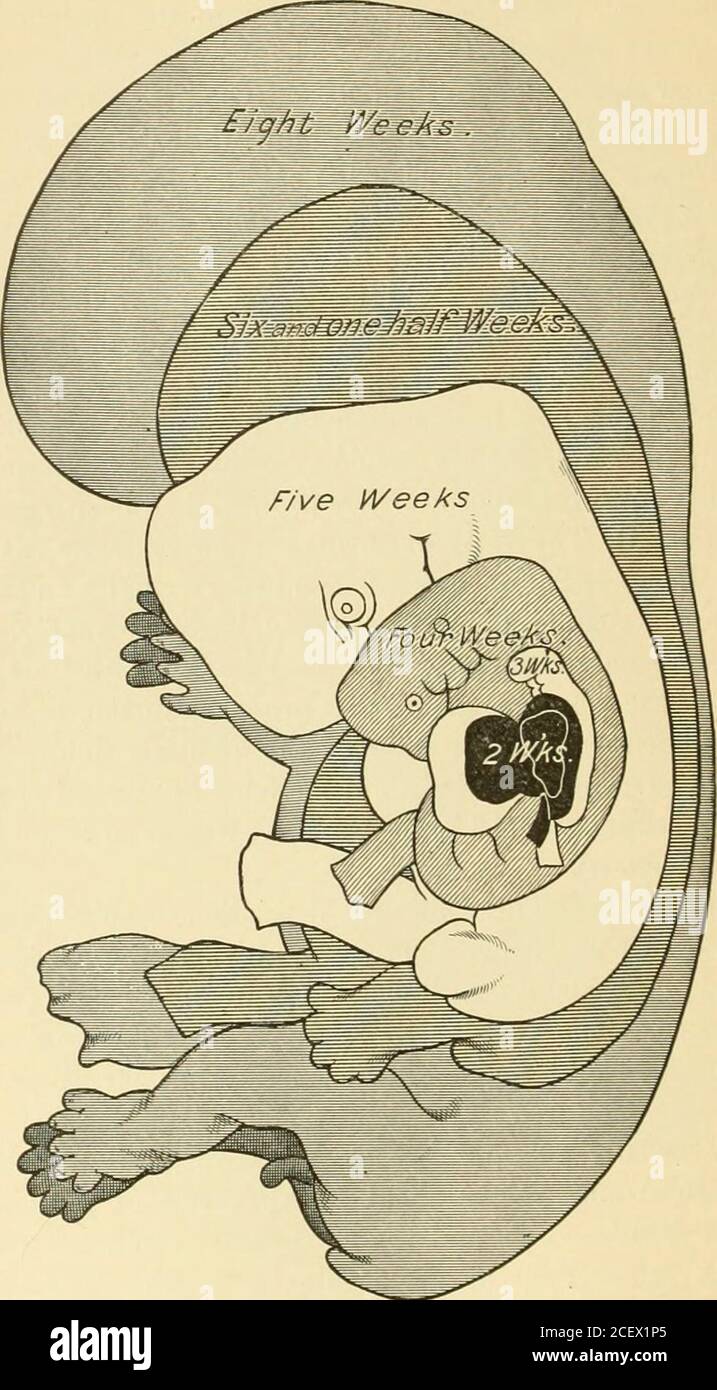. An American text-book of obstetrics. For practitioners and students. assumes abrighter flesh-color; the scalp is plentifully supplied with hair; the nailsalmost reach the finger-tips. The vernix caseosa forms a complete coating;the lanugo, or embryonal down, begins to disappear. The subcutaneous fatlias increased, giving less harsh outlines to the body. The close of this monthfinds the fetus measuring about 40 centimeters (16 inches) and weighing from2 to 2J kilograms (4 to 5 pounds). The Ni?ith Month.—The fetus at full term presents usually a well-rounded 102 AMERICAN TEXT-BOOK OF OBSTETRIC

Image details
Contributor:
Reading Room 2020 / Alamy Stock PhotoImage ID:
2CEX1P5File size:
7.1 MB (377.5 KB Compressed download)Releases:
Model - no | Property - noDo I need a release?Dimensions:
1174 x 2128 px | 19.9 x 36 cm | 7.8 x 14.2 inches | 150dpiMore information:
This image is a public domain image, which means either that copyright has expired in the image or the copyright holder has waived their copyright. Alamy charges you a fee for access to the high resolution copy of the image.
This image could have imperfections as it’s either historical or reportage.
. An American text-book of obstetrics. For practitioners and students. assumes abrighter flesh-color; the scalp is plentifully supplied with hair; the nailsalmost reach the finger-tips. The vernix caseosa forms a complete coating;the lanugo, or embryonal down, begins to disappear. The subcutaneous fatlias increased, giving less harsh outlines to the body. The close of this monthfinds the fetus measuring about 40 centimeters (16 inches) and weighing from2 to 2J kilograms (4 to 5 pounds). The Ni?ith Month.—The fetus at full term presents usually a well-rounded 102 AMERICAN TEXT-BOOK OF OBSTETRICS. body, from which the lanugo has almost entirely disappeared. The skin isless highly colored, and is covered in places, particularly the head, the axilla, the groin, and the flexor surfaces, with a layer of protecting vernix. Both tes-ticles have descended into the scrotum ; in the female the labia majora are incontact. The intestinal tract contains the dark-greenish-colored meconium, consisting of the secretions of the intestines and the liver mixed with the epi-. Fig. 91.-Diagram illustrating the outlines of the human fetus at various stages from the end of thesecond to the end of the eighth week, magnified five times imodihed after Mall). thelium from the digestive tube, together with epidermis and lanugo swallowedby the fetus. The umbilicus has reached a position almost exactly in themiddle of the body. The first epiphyseal ossification to appear, that of thelower end of the femur, is often the only one present, but ossification mayhave commenced also in the upper epiphyses of the tibia and the humerus. PHYSIOLOGY OF PREGNANCY. 103 A convenient simple method of determining the approximate length of thefetus at any period during gestation has been given by Haase. The length incentimeters may roughly be estimated up to the end of the fifth month bysquaring the month; beyond the end of the fifth month, by multiplying themonth by the common coefficient 5. Computed by this met